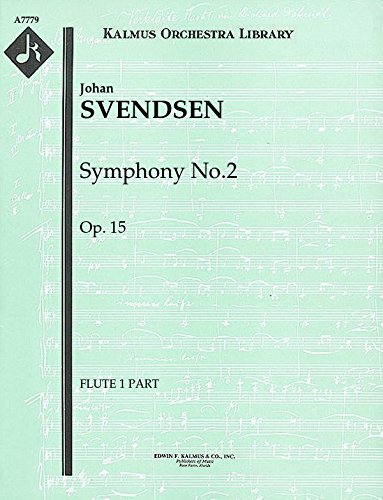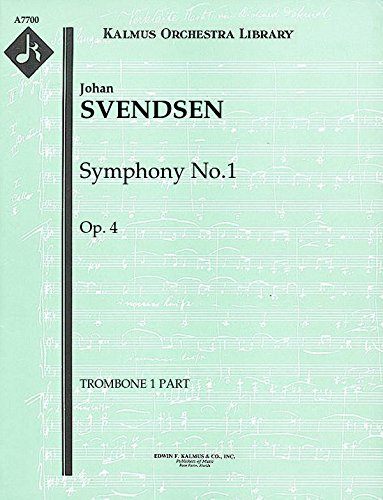Background
He was born in Christiania (now Oslo) on the 30th of September 1840. His father was a music teacher and Svendsen learned both the violin and clarinet from him.



( All Kalmus Orchestra Library items (except "Study Score...)
All Kalmus Orchestra Library items (except "Study Scores" and "Vocal Scores") are large-format (either 10x13 or 9x12 inches) printed on high-quality offset stock. Individual parts and sets do not come with covers and are normally saddle-stitched or sewn. Work: Symphony No.2, Op.15 Item Description: Flute 1 and 2 parts Composer: Johan Svendsen Quantity: 1 copy each PML SKU: 05851-002-003 Publisher: E.F.Kalmus (Kalmus Orchestra Library) Work Instrumentation: 2, 2, 2, 2 - 4, 2, 3, 0, timp, str
http://www.amazon.com/gp/product/B00UKZQTAU/?tag=2022091-20

( All Kalmus Orchestra Library items (except "Study Score...)
All Kalmus Orchestra Library items (except "Study Scores" and "Vocal Scores") are large-format (either 10x13 or 9x12 inches) printed on high-quality offset stock. Individual parts and sets do not come with covers and are normally saddle-stitched or sewn. Work: Symphony No.1, Op.4 Item Description: Trombone 1, 2 and 3 parts Composer: Johan Svendsen Quantity: 1 copy each PML SKU: 05850-016-018 Publisher: E.F.Kalmus (Kalmus Orchestra Library) Work Instrumentation: 2, 2, 2, 2 - 4, 2, 3, 0, timp, str
http://www.amazon.com/gp/product/B00UKZQIE2/?tag=2022091-20
He was born in Christiania (now Oslo) on the 30th of September 1840. His father was a music teacher and Svendsen learned both the violin and clarinet from him.
He began his studies with Ferdinand David, but problems with his hand forced him to switch to composition, which he studied with Carl Reinecke. He completed his studies in Leipzig in 1867, receiving first prize in composition.
His attention turned to conducting. After spending time in Paris (1868–70) and Leipzig (1870–72), he returned to Christiania. He was conductor of the Musical Society Concerts in Christiania (1872–77), then spent three years in Germany, Italy, England and France.
In 1883 Svendsen became court kapellmeister at Copenhagen.
In stark contrast to his more famous contemporary and close friend, Edvard Grieg, Svendsen was famous for his skill of orchestration rather than that of harmonic value. While Grieg composed mostly for small instrumentation, Svendsen composed primarily for orchestras and large ensembles. His most famous work is his Romance for violin and orchestra, Op. 26. He was very popular in Denmark and Norway during his lifetime, both as a composer and a conductor, winning many national awards and honors. However this popularity did not translate into acceptance into the international repertory of classical music. He died in Copenhagen, aged 70.
Svendsen's first published work, the String Quartet in A minor, Op. 1, achieved great popular success. He quickly followed with the String Octet, Op. 3 and String Quintet, Op. 5, both of which added to his early fame. All of Svendsen's chamber music was written while he was at the Leipzig Conservatory, yet these works are not considered student works. By general consensus, Svendsen was regarded as one of the most talented students then at the Conservatory. His works won prizes and received public performances to much acclaim.
( All Kalmus Orchestra Library items (except "Study Score...)
( All Kalmus Orchestra Library items (except "Study Score...)
((Music Sales America). Arranged by F. Henriques.)
( Publisher ID: EP9016A )
Svendsen had a son out of wedlock, Johann Richard Rudolph.
In 1871 he married an American Sarah (Sally, later changed to Bergljot) Levett Schmidt. In 1884, he and his wife separated.
Following a divorce from Sarah (10 December 1901), he married (23 December 1901) Juliette Haase, with whom he had been living and had three children. His younger son from this marriage was the famous Danish actor Eyvind Johan-Svendsen (1896–1946).
